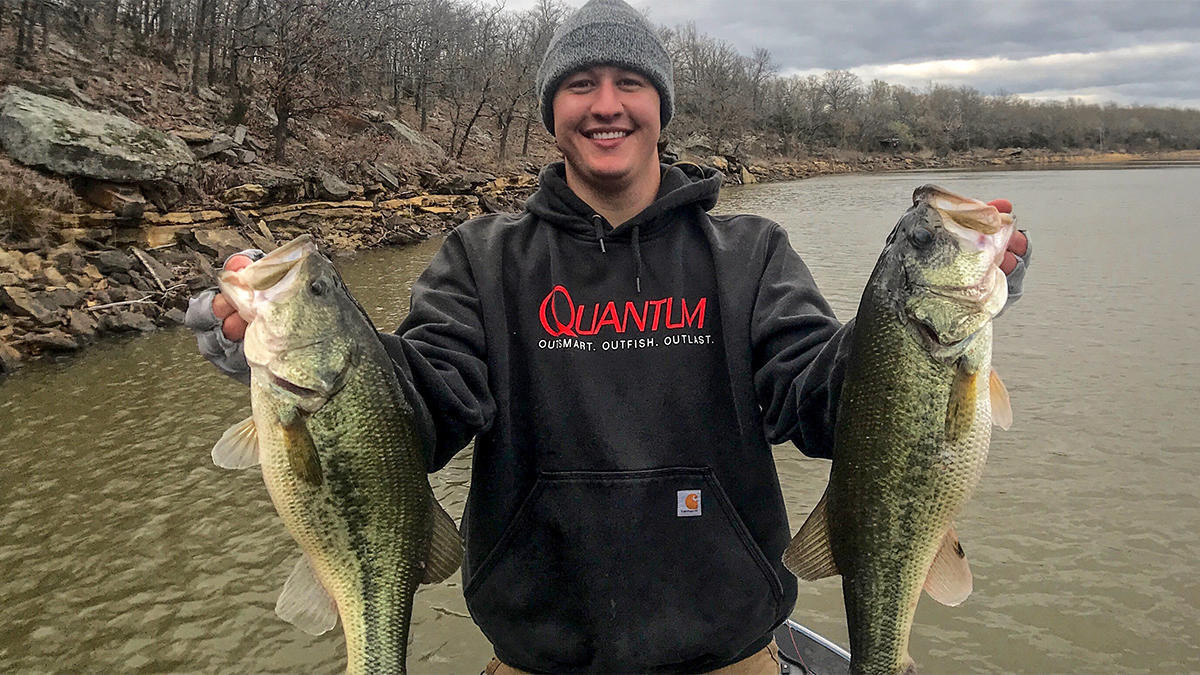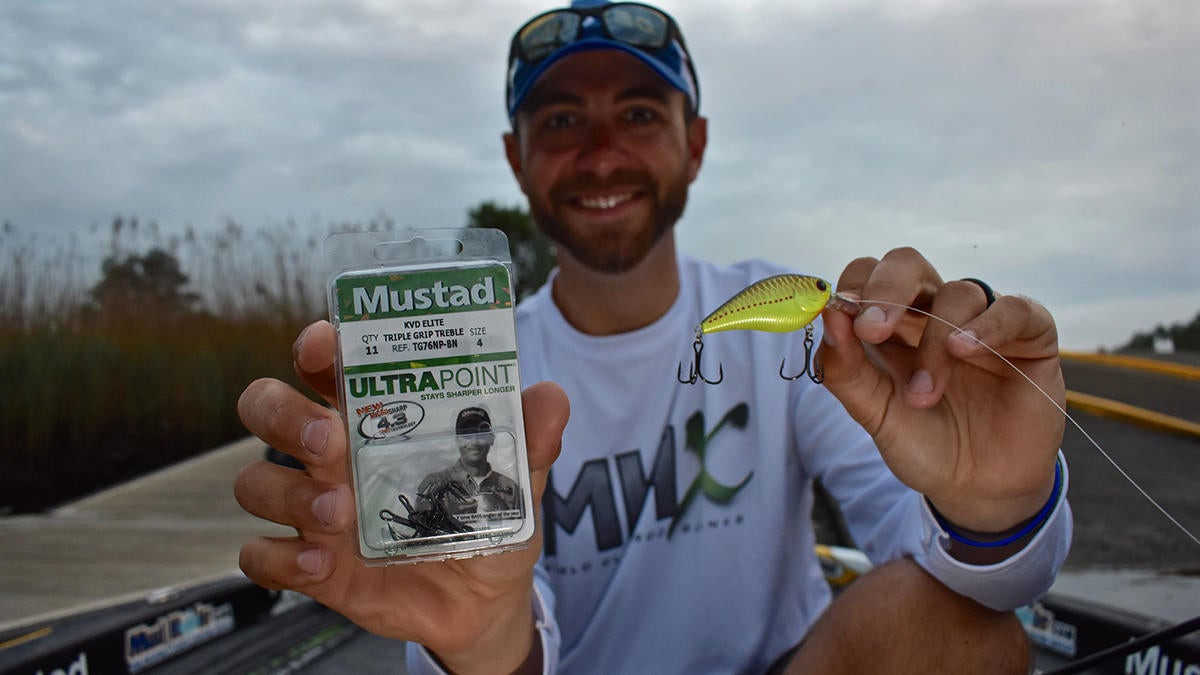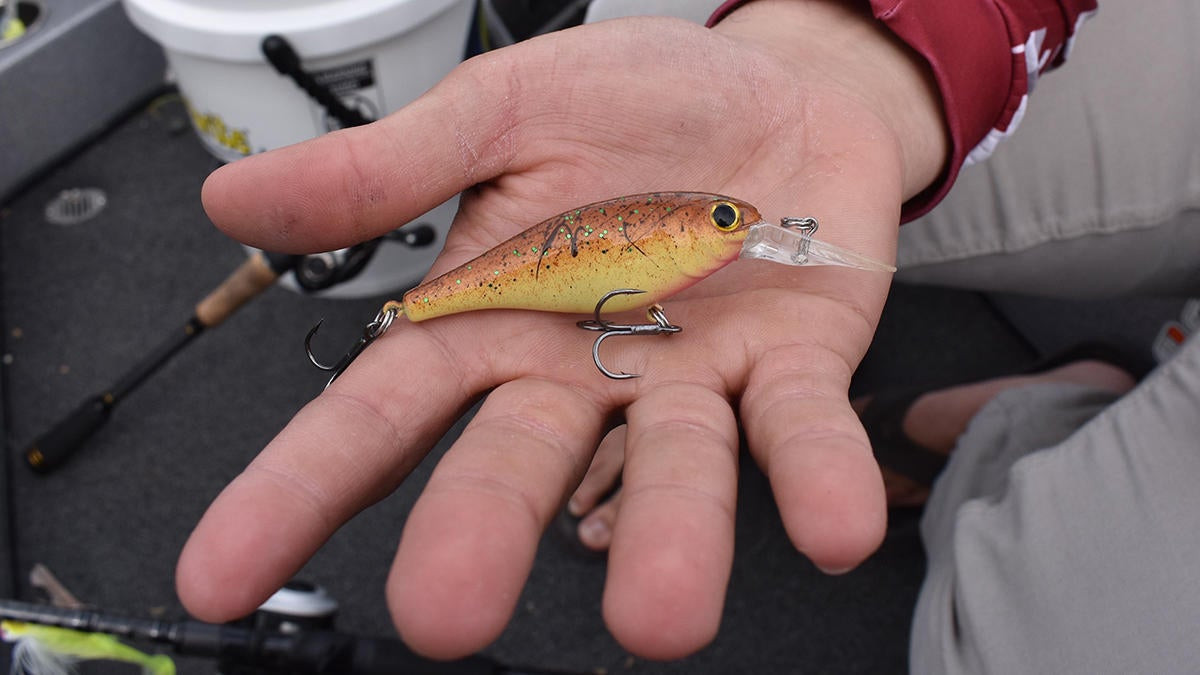Crankbaits are one of the best ways to catch bass in the springtime. Shallow-running and mid-depth crankbaits come in all shapes and sizes and are a favorite for anglers of all skill levels. While these lures will absolutely catch fish right out of the package, there are a few simple changes you can make to maximize the effectiveness of your favorite plug.
My day job takes me all over the country following professional fishing tournaments and as an avid angler myself, it has afforded me the opportunity to learn a lot from the pros. These three easy modifications are steps I’ve noticed pros regularly make when relying on a crankbait to bring home the bacon.
Swap the hooks early and often
Changing hooks on a crankbait is a well-documented modification, and for good reason. Spend time in the boat with any cranking aficionado and you are bound to see them swap out their treble hooks a time or two. The process takes no more than 30 seconds with a little practice, or if you have a good pair of split-ring pliers.
Kevin VanDam is one such crankbait connoisseur and has arguably won more money winding a plug than any other person on the planet. VanDam is unapologetically meticulous about changing his hooks out with Mustad KVD Elite Series Triple Grip Treble Hooks.
I spoke to VanDam after his 2018 Bassmaster Elite Series win on Grand Lake where he used a Strike King 1.5 Squarebill Crankbait to catch most of the bass he weighed in. VanDam said he went through 100+ treble hooks throughout the four-day event. Freshening up his hooks each night along with numerous times on the water after grinding his plugs over rocks, wood, and catching lots of bass.
KVD fishes at the highest level and is on the extreme end of the spectrum, but taking the time to change hooks even once or twice a day makes a big difference. There are a several reasons and benefits received by changing treble hooks, but the primary advantage lies in ensuring the hooks remain as sharp and sticky as possible.
Bass are notorious for slapping at crankbaits as often times it’s a reaction strike causing them to bite. Regularly swapping out treble hooks helps you hook up with those kinds of bites, ultimately resulting in landing a few more fish throughout the day. If you are out fishing for fun, this might mean one or two more bass during your day off, but if you are fishing competitively this 30-second modification could save a lot of money.
Utilize snap swivels
Another quick and easy crankbait modification that’s not-so-talked-about is using a snap swivel as a line tie on your favorite plug. The last few years I’ve noticed many seasoned crankbait anglers employ these snaps when fishing shallow running crankbaits in the springtime without thinking much of it. It wasn’t until walking the boatyard at the 2019 Bassmaster Classic a month ago that I took notice.
The 2019 Classic was held on the Tennessee River and most suspected a crankbait would play a big role for those who finished near the top of the leaderboard. Almost every competitor had two or more plugs on the deck of their boat. And, most of them were attached to a swivel like a VMC Duolock Snap. I’m not the smartest dude in the world, but seeing this made a light bulb go off.
Throughout the late winter and spring, a snap swivel helps give a plug a more erratic action as it’s slowly crawled over rocks or wood. You don’t necessarily want an aggressive action this time of year, but having your crankbait dart erratically after popping it loose from cover or during pauses on a retrieve can trigger sluggish bass into biting.
Other added benefits of these swivels include protecting your knot and line from abrasions as your crankbait bill digs across the bottom, along with making it much quicker and easier to swap out to a different lure. It’s worth noting that most anglers retire their snaps when water temperatures warm, as snap swivels can be a hassle when fishing around vegetation or through heavy cover. But for cold-water or springtime cranking, adding a snap swivel to your repertoire is worthwhile.
Custom colors can make a big difference
Custom paint jobs are a third modification many experienced crankbait fisherman practice. Custom colors can have a notable impact depending upon which fishery or region of the country you are fishing. It’s not that there aren’t excellent color choices available right out of the package-there certainly are-and lots of bass are caught on them.
But when faced with relatively clear water clarity, pressured fish or unusual forage, having custom color schemes to show bass something different can prompt bites you may have missed. Often times professional anglers keep these custom painted lures extremely close to their chest, as they know a “secret color” gives them an advantage.
There are countless individuals and companies who carry out these custom paint jobs. A quick Google search will uncover a myriad of different people you can contact if you are interested, but I’d suggest looking for a painter in the same area of the country you fish. Colors become regional staples for a whole host of reasons, and taping into this local knowledge will shorten the learning curve. Typically this service costs anywhere from $10 to $50 per lure, so it can get costly in a hurry.
Fortunately, paying $20+ or more for a custom paint job isn’t the only way to set your crankbaits apart. Ott DeFoe won the 2019 Bassmaster Classic and did most of his damage with a lipless crankbait he marked up with a Sharpie! All you need is a little creativity and a can-do attitude to customize the color of your plugs.
Like DeFoe, you can use permanent markers or nail polish to add colors to hard baits, while fine sandpaper or “sun baking” a plug on a truck dash is another terrific way to change the look of a lure. Sometimes a crankbait’s color is a little too bright or loud for bass in certain scenarios, and these processes help to dull some of that brightness.
If you plan on slinging a crankbait around this spring, give these simple modifications a shot. Each one has its own unique purpose and will cause your crankbaits to get bites other anglers might be miss, along with helping you land more bass.















